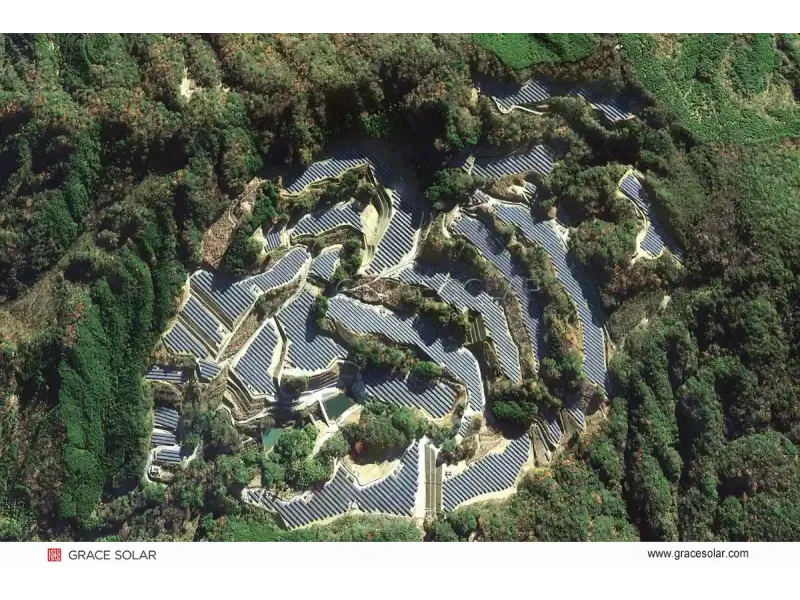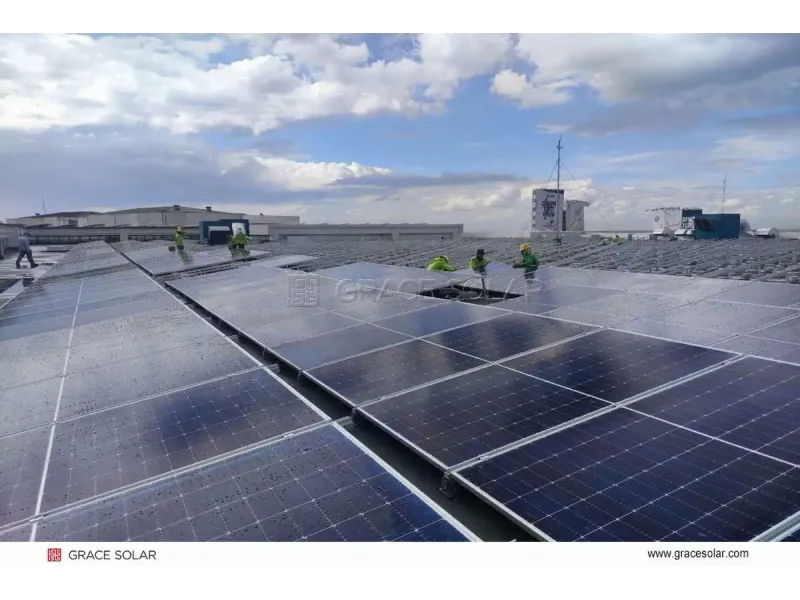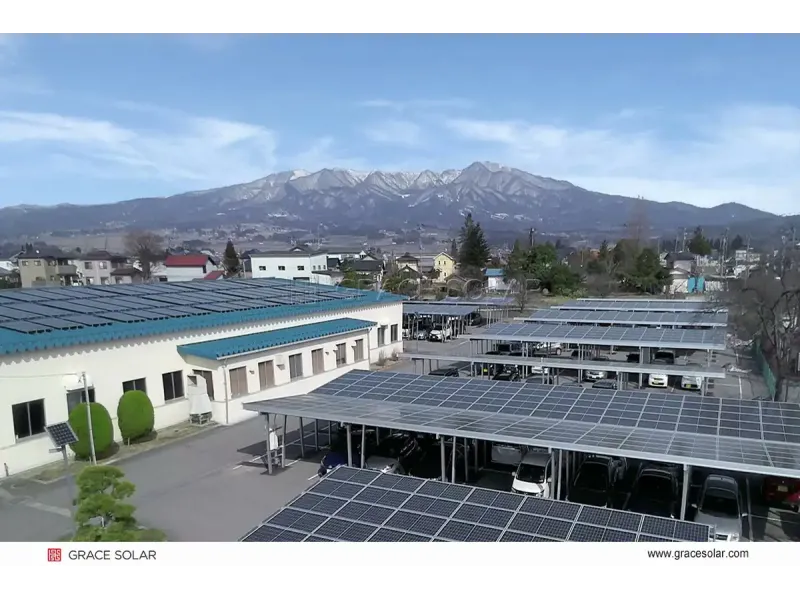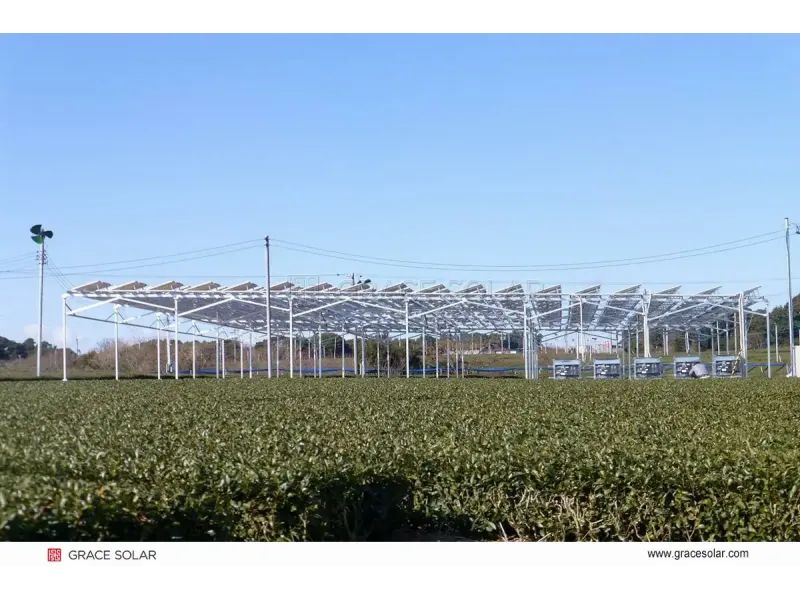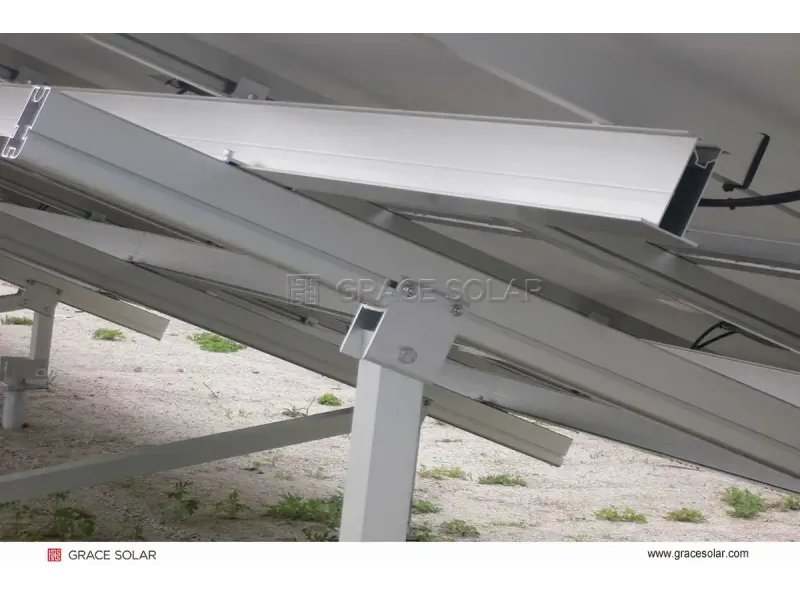Core Performance: Energy Yield Comparison
Modern tracking systems boost solar farm output by 25-45% versus fixed-tilt installations. The fundamental choice between single and dual axis technology directly impacts energy harvest efficiency:
Single Axis Trackers
These systems follow the sun's east-west daily path, delivering a significant 25%-35% energy increase over static installations. The most advanced single axis systems now incorporate AI-enhanced controllers that boost yields by an extra 6-8% through intelligent cloudy-day positioning algorithms. With ±60° tracking ranges and adaptive slope tolerance up to 20%, these solutions consistently outperform fixed-tilt installations while maintaining accessible pricing.
Dual Axis Solutions
By adding vertical tilt adjustment for seasonal sun angle variation, dual-axis technology captures 30%-45% more energy than static arrays. This design particularly excels in latitudes above 40° where solar paths shift dramatically between seasons. Modern innovations like multi-point drive systems increase structural rigidity by 20%, solving historical reliability concerns. Premium dual axis models also incorporate weather-predictive tracking that improves diffuse light harvest by 15-22%.
Cost-Reliability Tradeoffs Analysis
Financial & Structural Considerations
| Factor | Single Axis Trackers | Dual Axis Systems |
|---|---|---|
| Installation Cost | $0.08-$0.12/Watt (Low) | $0.25-$0.40/Watt (2.5-3.5x higher) |
| Operation & Maintenance | 1-3% of project lifetime cost | 4-7% (Moderate-High) |
| Land Efficiency | 30-40% ground coverage | Up to 50% coverage |
| Wind Resilience | Certified at 47m/s (3-second gust) | Requires reinforced engineering |
Real-world financial modeling shows dual-axis implementations require 12-15 year payback periods in markets with electricity below $0.12/kWh. This makes them primarily viable in regions with premium feed-in tariffs or critical space constraints. Professional EPC analysis should precede deployment decisions.
Application Scenario Guide
Optimal Deployment Matrix
Single Axis Advantages
- Prime locations below 40° latitude
- Large-scale utility projects ($1M+ budgets)
- High-wind regions (typhoon/hurricane zones)
- Projects prioritizing short ROI periods
Dual Axis Advantages
- Latitudes above 40° (Scandinavia, Canada)
- Space-constrained rooftops
- High-tariff markets ($0.15+/kWh)
- Bifacial-agrovoltaic hybrid installations
Terrain Adaptation Thresholds
Modern trackers overcome traditional terrain limitations through innovative engineering:
Both technologies now handle significant north-south slopes - up to 20% for single axis and 15% for dual axis designs. For complex terrain projects, advanced control systems eliminate foundation height variations and dawn/dusk shadowing while implementing weather-responsive algorithms.
Technology Evolution
Intelligence Integration Breakthroughs
The tracker technology landscape has transformed through recent innovations:
Control Systems
All modern trackers now feature:
- MCU controllers with 0.04kWh/day max consumption
- GPS time + tilt sensor hybrid positioning (±2° accuracy)
- LoRa/Zigbee wireless communication
- Self-powered operation options
Safety Engineering
Critical protection systems include:
- Triple-layer safety limits (mechanical/motor/soft)
- -40°C to +70°C operation range
- IP65 weatherproof certification
- Overheat/overcurrent protection
The Ultimate Decision Framework
- Latitude Check - Below 40°? Single axis typically suffices
- Budget Analysis - Under $1.2M? Single axis has better ROI
- Electricity Pricing - Tariffs above $0.15/kWh? Consider dual axis
- Land Requirements - Space constraints? Dual axis increases density
- Technology Partners - Verify wind certification (47m/s+) and slope tolerance
Industry data confirms single axis trackers currently dominate 85%+ of utility-scale installations due to superior LCOE performance. However, dual axis systems show accelerating adoption in specialized applications like Scandinavian floating solar farms (57°N latitude), Japanese commercial rooftops ($0.26/kWh tariffs), and next-generation bifacial-agrovoltaic hybrids.

